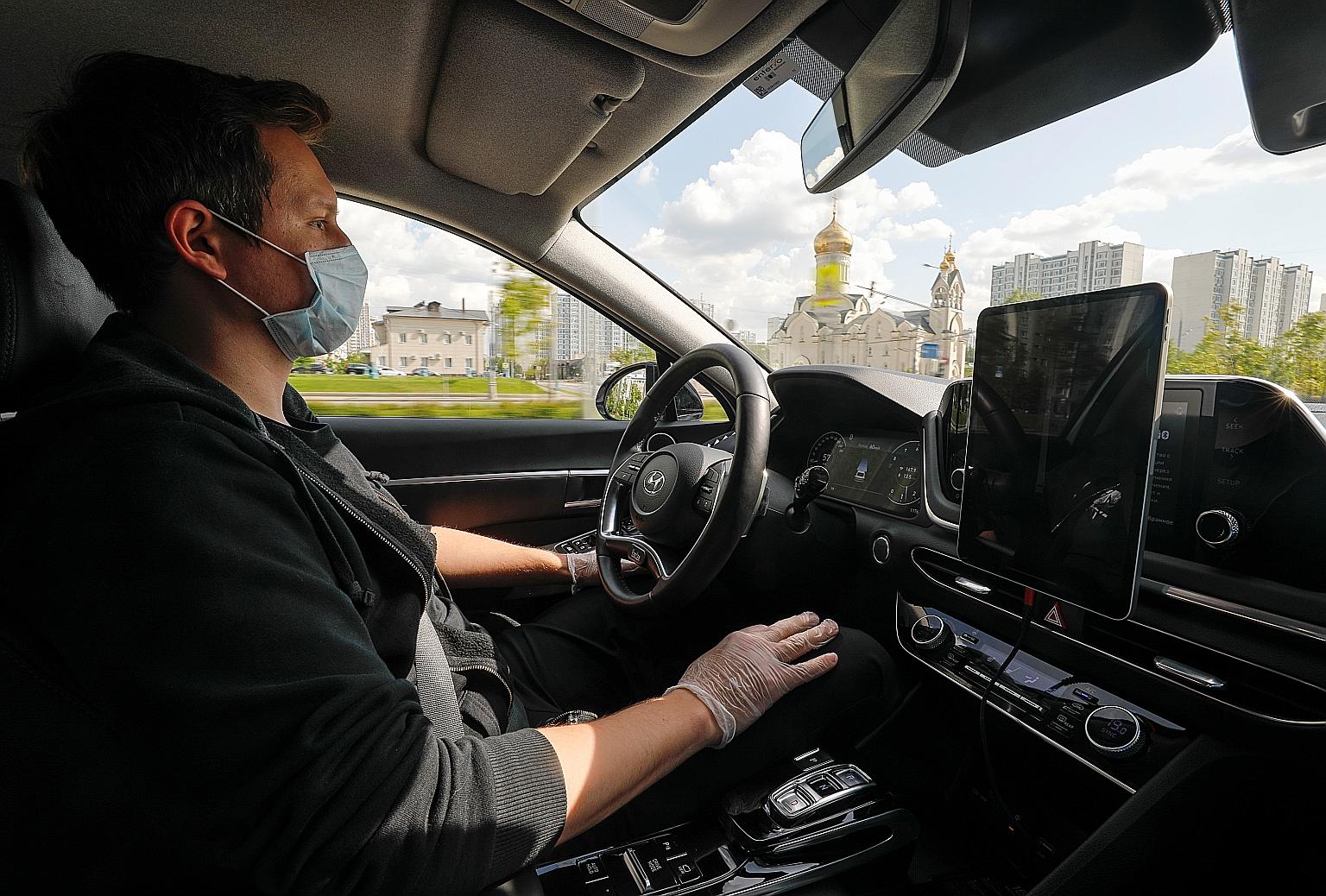Benefits of driverless cars will differ from city to city
Sign up now: Get ST's newsletters delivered to your inbox

A participant testing a Hyundai Sonata during a Moscow event in May organised by Yandex company to present the new generation of its self-driving car developed in collaboration with Hyundai.
PHOTO: REUTERS
Christopher Tan Senior Correspondent, Christopher Tan
Follow topic:
The development of autonomous vehicles (AVs) could make the urban environment more liveable and help make transport more sustainable.
But the degree of benefit will depend on the characteristics of each city and its mobility ecosystem, according to a report titled Can Self-Driving Cars Stop The Urban Mobility Meltdown? by the Boston Consulting Group (BCG) and Switzerland's University of St Gallen, which was released last week.
Although the Covid-19 pandemic is making commuters favour private transport such as cars and bikes over shared mobility for the next 12 to 18 months, many cities will embrace shared AVs in the long run because these can alleviate problems such as congestion, air pollution and road fatalities.
But while some cities will gain significant advantages by introducing AVs, others will fare better by promoting other mobility options, such as e-bikes and e-scooters.
Indeed, in some settings, AVs could exacerbate the problems that municipal planners are hoping to solve. Before taking action, cities must assess whether AVs will be a panacea or a burden.
The report's key findings are:
- Cities achieve significant benefits by actively shaping the urban mobility environment. For example, Los Angeles could cut its carbon dioxide emissions by 2.7 million tonnes a year through policies that promoted shared AVs and curbed the city's private vehicle fleet.
- New York planners could free up the equivalent of about 900 blocks of space currently reserved for parking, if they created the conditions for robo-shuttles to thrive.
- New physical and digitally connected infrastructure (including dedicated lanes and sensors that would enable self-driving cars to communicate with the surrounding environment) will be essential for AVs to succeed.
- Cities that allow private car use to grow in line with past trends will see their urban environment deteriorate significantly, with traffic volume increasing by an average of 6 per cent, and total parking space by 8 per cent.
- For some cities such as Hong Kong, promoting micromobility and walking could deliver greater benefits than introducing AVs.
After an initial wave of euphoria in the mid-2010s, self-driving cars have become the object of considerable scepticism. One reason for the change in public perception is the realisation that AVs are unlikely to be available at scale soon.
To cut through the noise about AVs and gain an objective view of their advantages and likely effects on different cities, the study used a tool which could simulate 1.7 billion trips. With that, they modelled how AVs could improve or worsen the urban environment and quality of life in five urban archetypes developed based on data from more than 40 cities worldwide.
Mr Nikolaus Lang, a BCG managing director and senior partner, says: "Cities need to create a vision of where they want to be in the future and start acting now. If they do nothing and if the growth in private car use increases in line with past trends, the urban environment is set to worsen significantly."
While some companies plan to launch AVs by the mid-2020s, experts interviewed for the study reckon it will take cities until 2030 before they are ready for them. Once they are, sales of self-driving vehicles will rise rapidly.
Readiness hinges on several factors, including infrastructure and regulation. To function properly, AVs will require new hard and digitally connected infrastructure, according to 90 per cent of experts interviewed. These include dedicated lanes, smart signalling and charging stations.
Regulations are also a prerequisite for successful AV introduction, 85 per cent of experts say. Policymakers must tackle issues such as accident liability and laws governing road use. Data access and ownership will be another important area.
About 87 per cent of experts say cities will need to develop data analytics capabilities so they can control and improve how AVs operate. Regulators will also need to consider ethical dilemmas regarding how autonomous systems should respond to an emergency.
Yet, the study concludes that traditional public transportation will likely continue to be the backbone of urban mobility in most cities.
The study recommends that public transport planners collaborate with autonomous mobility fleet operators and micromobility firms "so that they can deliver a seamless, multi-modal travel experience".
"They should include these new providers when planning long-term infrastructure investments and should work with them to improve network access," the study added.
In Singapore, the focus of AV trials has been on public transport.
Mr Lam Wee Shann, the Land Transport Authority's chief innovation and technology officer, says: "For densely populated cities like Singapore, vehicles with a larger capacity, such as autonomous shuttle buses, are the best way to carry lots of people during peak hours."

